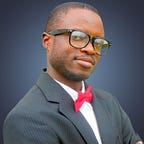Using critical thinking and science to combat dis(mis)information and conspiracy theories
In this day and age of rapid information dissemination,disinformation and conspiracy theories can quickly spread like wildfire, it is fundamental that we are able to personally verify the veracity of any information that we share before sharing and to take precautions as too the potential damage that such misinformation could cause.
When we come across any outrageous claim or trending news we can implement the baloney detector tool kit below, adapted from the American science writer Michael Shermer, we have to put on our critical thinking cap and ask the following questions
1. How reliable is the claim? it does not matter how many likes, downloads, followers, etc that such a claim has
2. Which other independent source makes such a claim?
3. Can the claim be replicated and repeated independently?
4. Is the claim consistent with how the world normally works?
5. Can you try to disprove the claim?
6. What are the evidence that supports such a claim?
7. Those making the claim, are they applying the rules of science?
8. Can positive evidence(Data, Pictures, videos, audios, documents, etc) be provided to support such a claim
9. Can the claim explain previous “ground truth”
We can’t believe anything we hear and start spreading it, the only good reason to believe anything is if there is real empirical evidence to support it
Another way of verifying truth is to guess what is out there, by guessing a model(what we expect to see), we then apply math to verify the consequences of this model(what do we see, hear with our senses or instruments to amplify our senses etc) and then we carry out a real-world observation to check if the outcome of the model is consistent with the observation, the model could be math, simulation, prototype, a thought experiment
At a deeper level, we can know what is true or what is real by considering the following points
1. If we can detect it with any of our senses(at times our senses can fool us(hallucinations))
2. Using Instruments to aid our senses to obtain data
3. Using models to hypothesized what might be real and using those models to predict the outcomes of things
4. Emotions are also real(but they are complicated and not yet fully understood, besides hormonal changes and neuronal activities)
Witchcraft is not real, the supernatural is not real, everything transcendental(like music, love, passion) can be referred to as a magical feeling
Here are the different kinds of Magic
Supernatural magic, this is just mythical belief and this is bad(it's actually dangerous and it's lazy because it sits back to create multiple hypotheses here and there and does not seek to verify then, then it draws its conclusion as to how things work)
Stage magic (optical illusion, false pattern, false positives, chemistry, low attention span, low focal concentration, trickster)
Poetic Magic (literature, bible, books, science, nature), science is magical, science is beautify
In conclusion, a good way to think about conspiracy theories, if a claim sounds so ridiculous and does not fit into the principles above, it’s likely that the person making such a claim has been tricked into believing a conspiracy or has been made to have an honest hallucination, call it honest nativity, gullibility, supernatural happenings is nonsense, if It can’t be explained more elaborately using the tools above then it should be trashed.
References
The Magic of Reality by Richard Dawkins
Baloney tool kit by Michael Shermer
